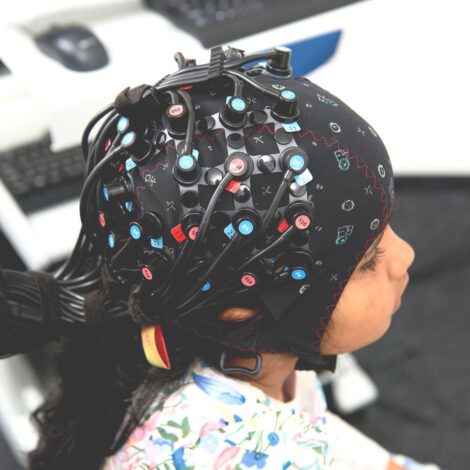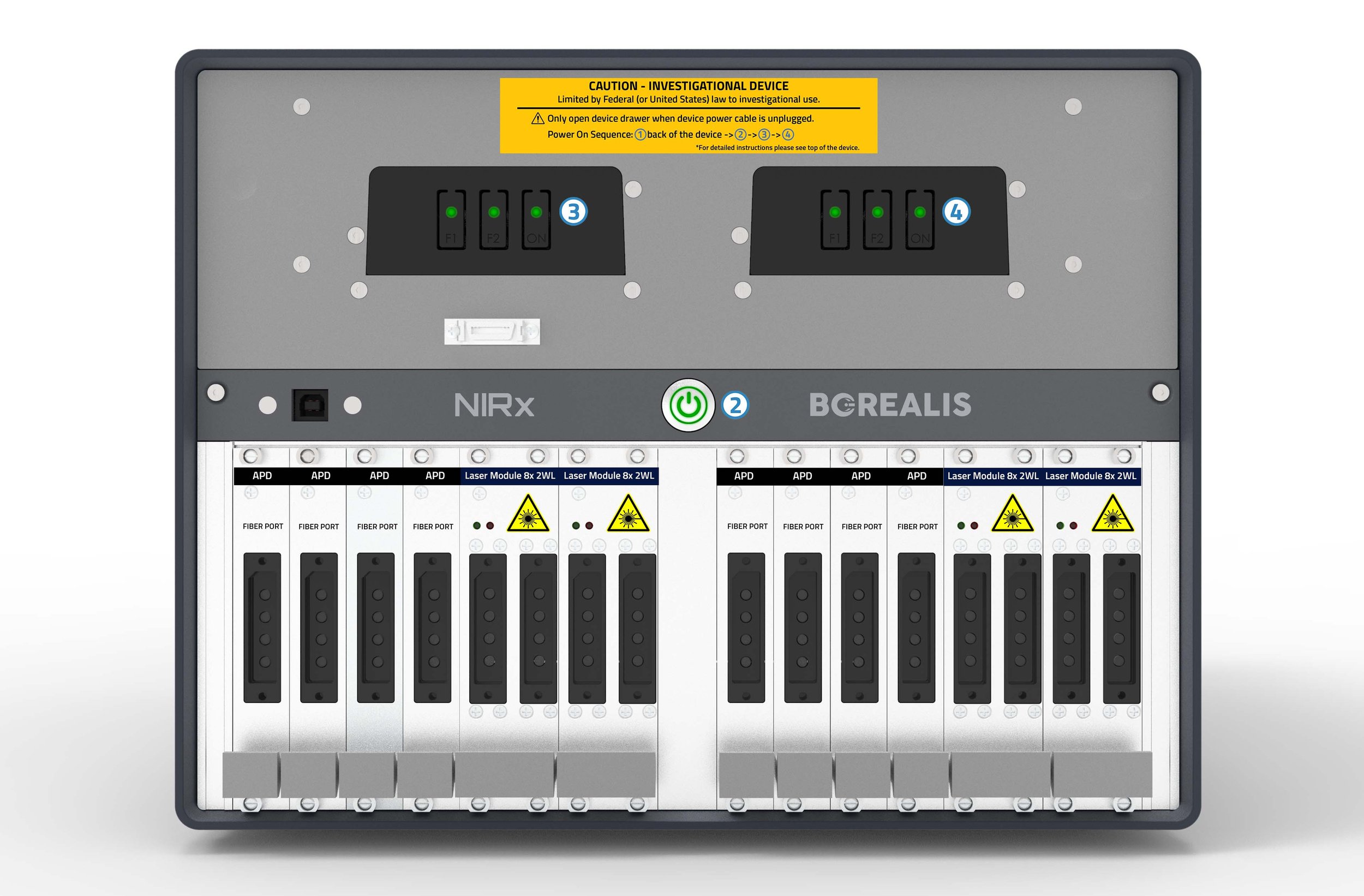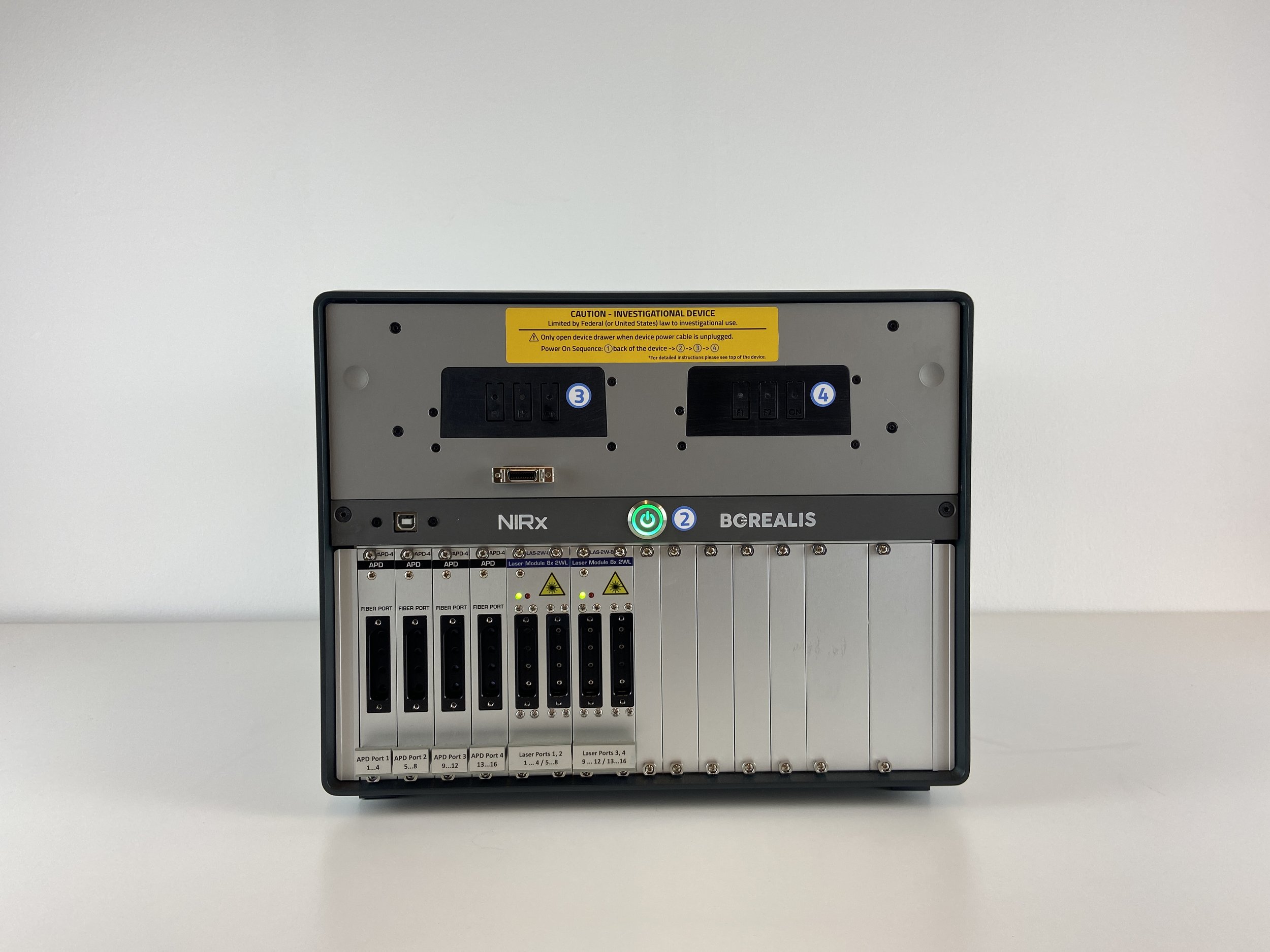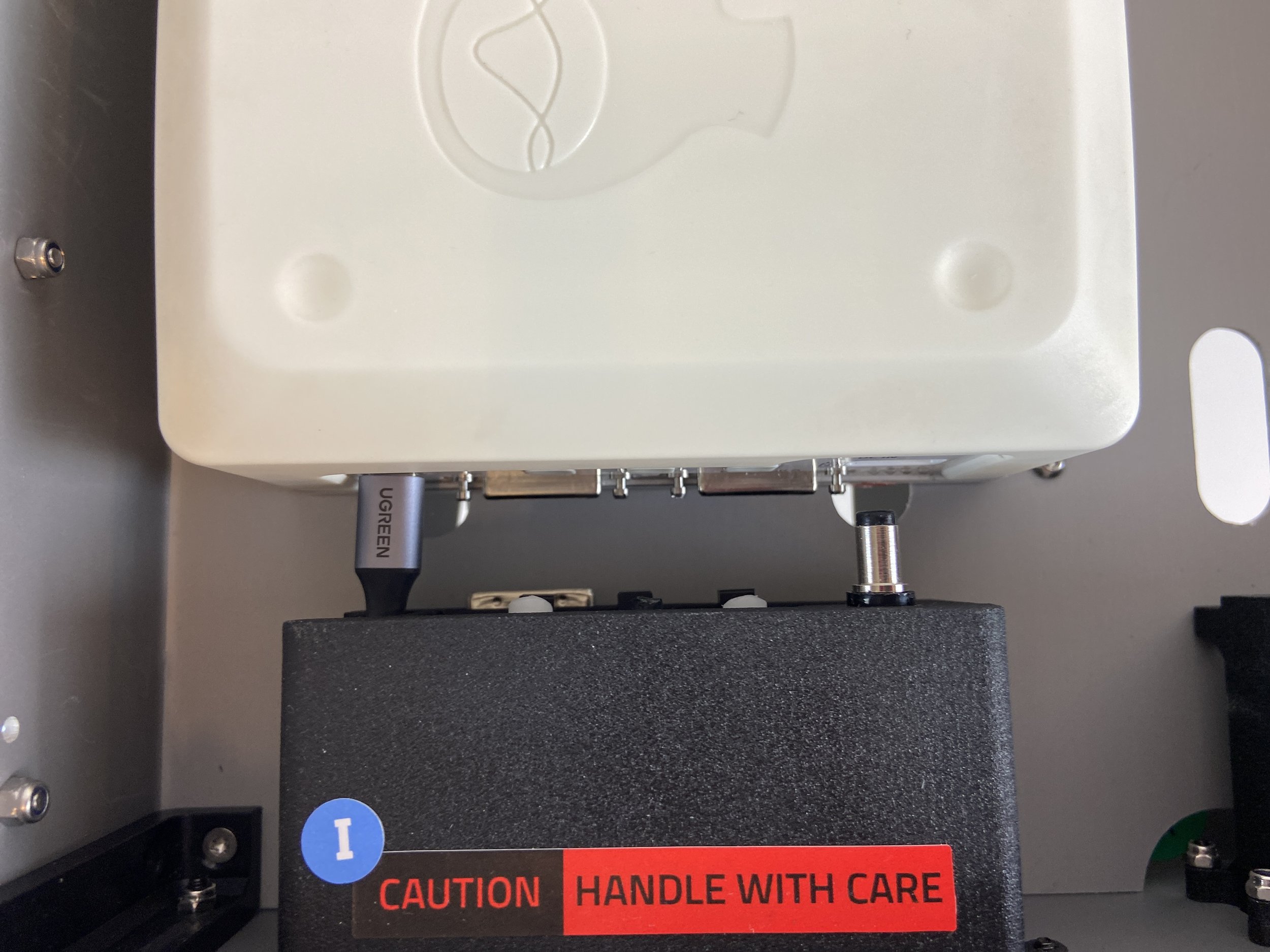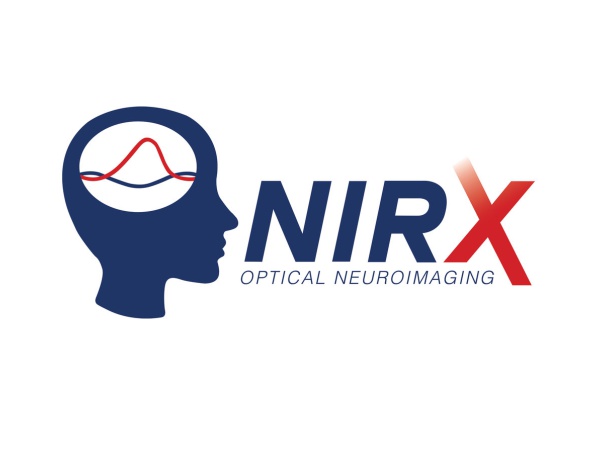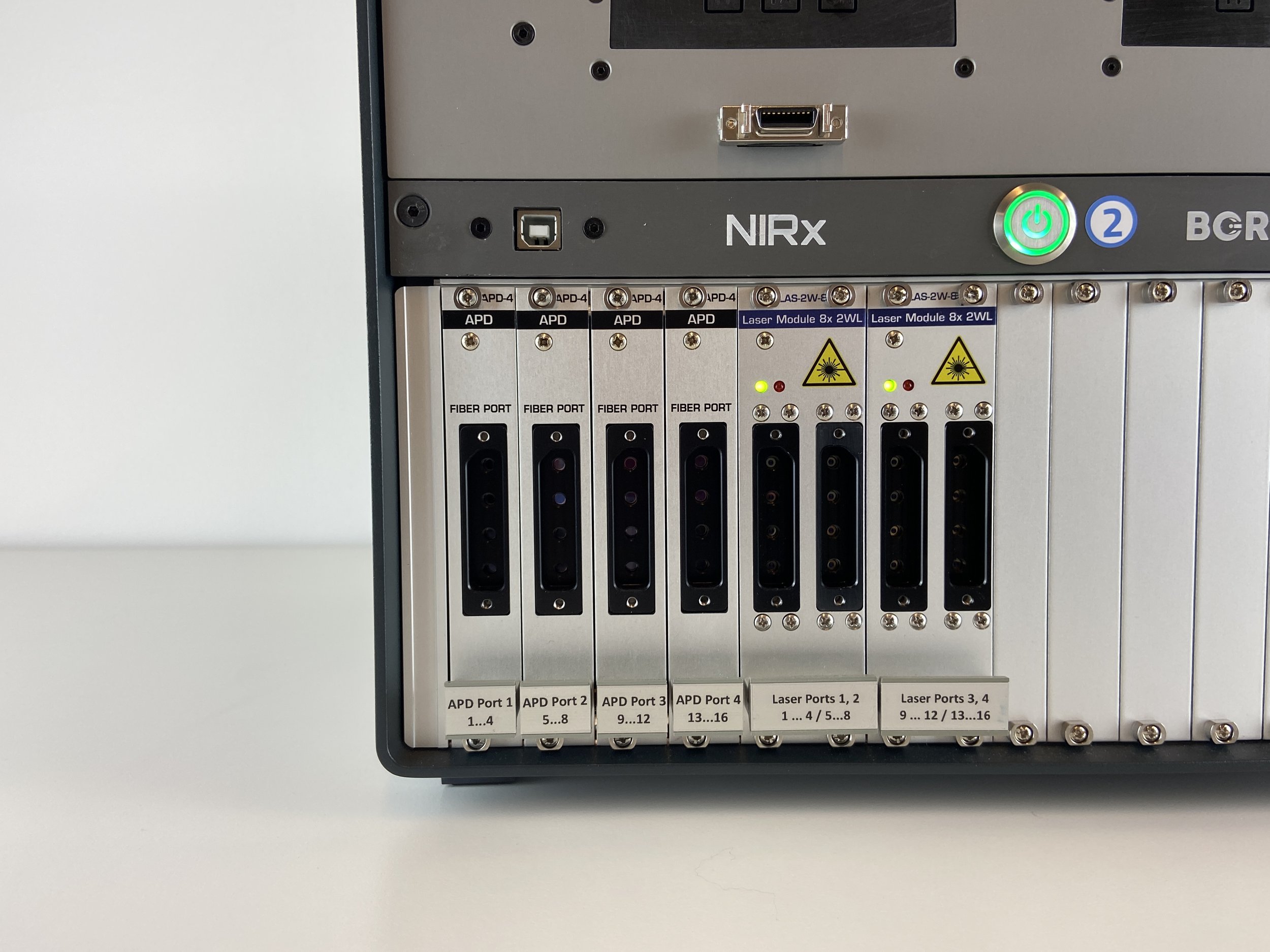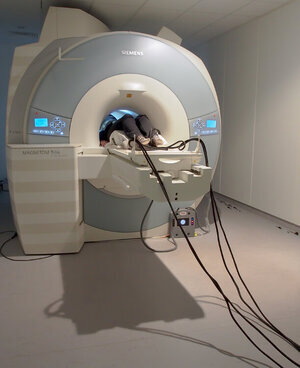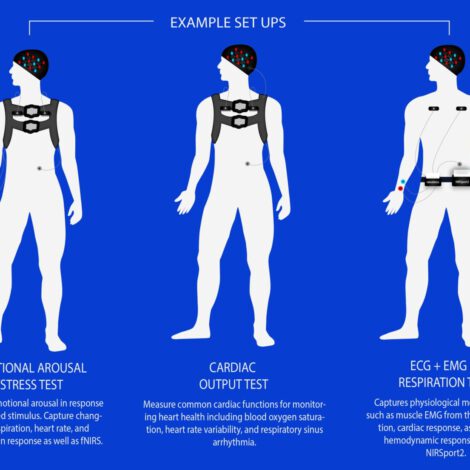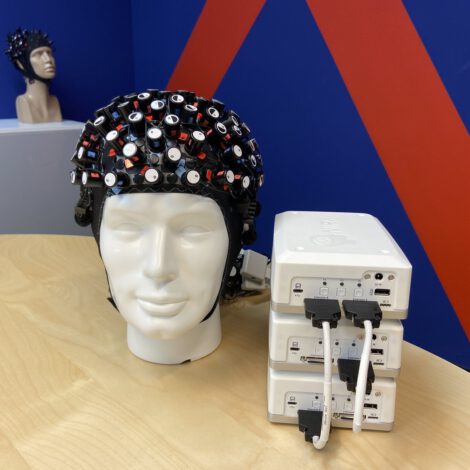Advantages
The use of optical fiber based optodes for combining fNIRS with fMRI serves impactful research applications, and combining the two modalities aids the validation of the complementary signals (see Scarapicchia et al., 2017 for review). Compared to the deoxy-Hb based signal of fMRI, fNIRS separately measures deoxy-Hb and oxy-Hb which provides further information about hemodynamics and can improve the fMRI signal quality (Cooper et al., 2012). Additionally, combined fNIRS-fMRI multimodal imaging studies can assess the congruence between full-body behaviors with fNIRS and analogous stationery designs with fMRI, thereby extending research into more ecologically valid and real world settings.
Functionalities
NIRxBorealis performs dual-wavelength continuous-wave fNIRS on large tissue structures at high (several Hz) sampling rates in a time-multiplexed, scanning fashion. The use of powerful laser sources and ultra-sensitive Avalanche Photodiode detectors allows for diffuse transmission measurements up to ~4 cm, making it suitable for optical tomographic (‘multi-distance’) imaging which extends the depth of recording. A sliding rack enclosure couples with the NIRSport2 devices streamlining the installation. Source and detector components are implemented as modular electronic cards, which can be extended for higher density recording. The device also features eight parallel optically isolated digital input channels for the acquisition of event trigger signals. Operation is provided through our highly user-friendly Aurora fNIRS software, and connected via USB. This research platform uses our proprietary ultra-fast set up sequence and signal optimization process.
Technical Specifications
| Maximum Sources | 32 (Number of Sources: 4 – 32) |
| Maximum Detectors | 32 (Number of Detectors: 8 – 32) |
| Source Wavelengths | laser class 1: 785nm & 830nm |
| Source Illumination Type | Laser coupled diode. High conductive fiber. |
| Sampling Rate | 70 – 240 Hz |
| Detector Sensor | Avalanche coupled Photodiode (APD) |
| Optode type | Intended for use with low-profile optodes. Can also host single-tip, dual-tip, and Blunt-Tip optodes |
| Maximum number of topographic channels | 32 channels, depends on optode layout used (up to 200 channels in quad-tandem mode) |
| Key Measurement Features | Time multiplexing, full frequency-encoded measurements, and dynamic gain state switching |
| Detector Dynamic Range & Sensitivity | 76.5 dBopt measurement dynamic range and 33 fW (50 BW) |
| Headgear | NIRScaps: freely-configurable, measures whole head, fits all age ranges, multi-modal |
| Operation mode | USB, Stand-alone direct-to-device recording mode (LSL), or cable (8-bit TTL input) |
| Event Synchronization | Wireless (LSL; Lab Streaming Layer), Cable (8-bit TTL Input) |
| Included Data Acquisition Software | Aurora fNIRS |
| Data Format | Raw light intensity: tab-delimited (may be analyzed in any environment) |
| Data Output Options | NIRx format: .wl1, .wl2, etc.; .NIRS format; raw format |
| BCI/Neurofeedback | Optional module for Aurora fNIRS https://www.nirx.net/turbo-satori |
| Multi-modal Compatibility | fMRI, tDCS/TES, eye-tracking, motion-tracking Requiring module: MEG, TMS |
| Multi-distance/Short-distance Probe Arrays | Yes |
| 3D Depth-discrimination | Yes |
| Included Accessories | NIRScaps, System carrying case, Trigger cable |
| Optional Accessories | Recording/Analysis Computers, Computer cart, Active Trigger Splitter, fMRI/TMS/MEG Compatibility, Flat and Blunt-tipped Probes, BCI/neurofeedback |
| Temperature Range | 10 – 40C (operating), -15 – 70C (storage) |
| Spectroscopic Technique, Phase Type | Continuous Wave, Single Phase |
| Humidity | 20% – 80% Relative, Non-condensing |
| Power Supply Voltage and Consumption | Wall outlet 175Hz |
| Dimensions (WxHxL), Net Weight | 286 mm x 368 mm x 391 mm, approx. 12 Kg |

